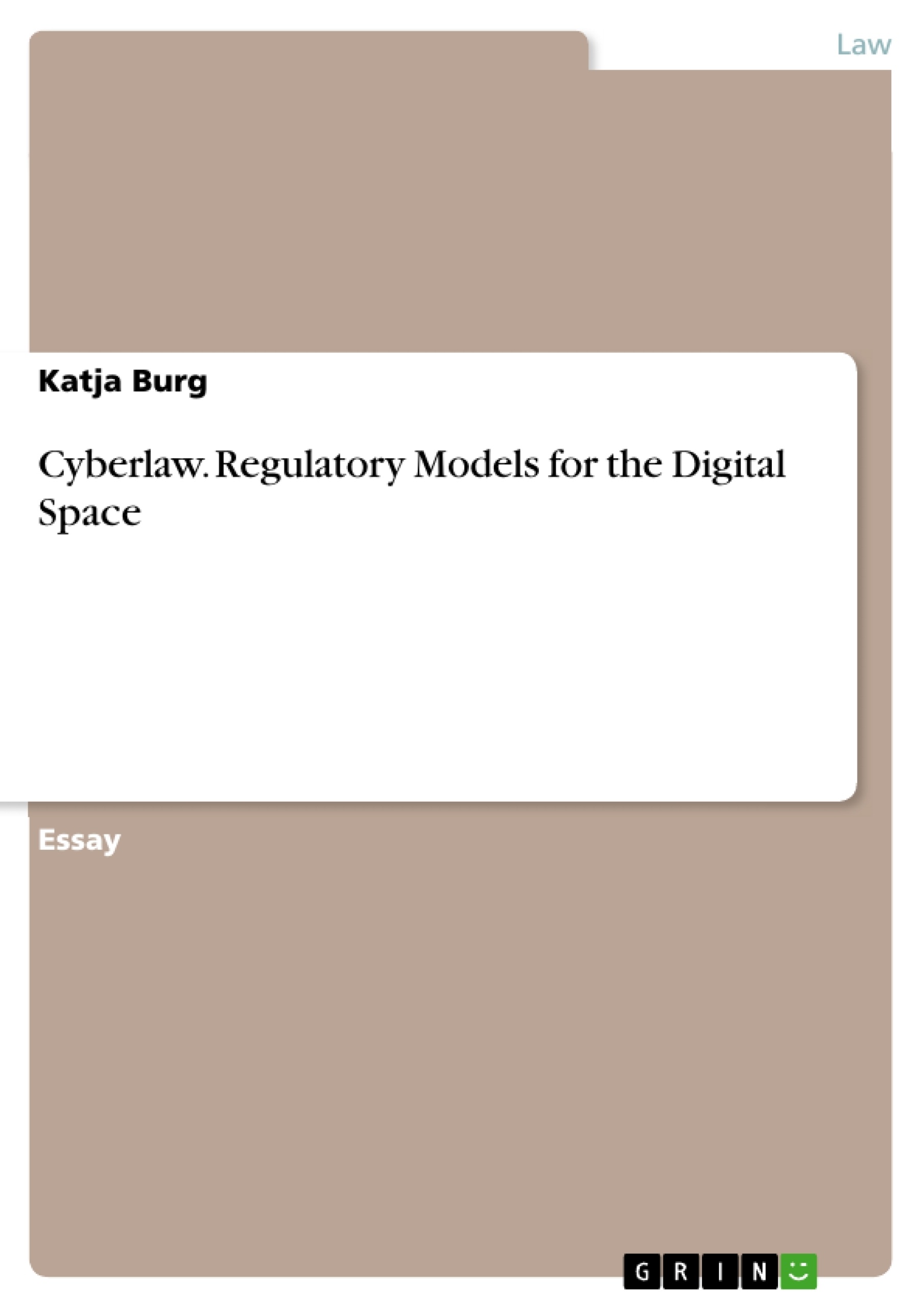This short essay compares and contrasts the symbiotic regulation model with Lessig's "code" model for Internet regulation. It discusses which model is preferable what advantages it has over the other.
Inhaltsverzeichnis (Table of Contents)
- Introduction
- Regulation Models
- Cyber-paternalism
- Lessig's Code Model
- Network Communitarianism
- Murray's Model of Symbiotic Regulation
- Comparing the Models
- Conclusion
Zielsetzung und Themenschwerpunkte (Objectives and Key Themes)
This text analyzes two contrasting models for regulating the internet: Lessig's "code" model and Murray's symbiotic regulation model. It aims to compare and contrast these models, highlighting their strengths and weaknesses and ultimately determining which model is preferable.
- Cyber-paternalism versus Network Communitarianism
- The role of code in internet regulation
- The influence of market forces, social norms, and architecture on online behavior
- The dynamic nature of internet regulation and the importance of considering interconnectedness
- The role of incentives, persuasion, and motivation in effective online regulation
Zusammenfassung der Kapitel (Chapter Summaries)
- Introduction: The text introduces the concept of internet regulation and outlines three main schools of thought: Cyber-libertarianism, Cyber-paternalism, and Network Communitarianism. It then focuses on Lessig's "code" model (Cyber-paternalism) and Murray's symbiotic regulation model (Network Communitarianism).
- Cyber-paternalism: This section discusses Lessig's "code" model, emphasizing the idea that code shapes the environment and facilitates control. Lessig argues that code is the primary regulator in cyberspace, influencing market decisions, legal enforcement, and user behavior.
- Network Communitarianism: This section explores Murray's model of symbiotic regulation, highlighting its emphasis on the interconnectedness of factors within the internet. Murray argues that the system is self-regulatory, with influence flowing in both directions between users and various modalities, including the market, social norms, and architecture.
- Comparing the Models: This section contrasts Lessig's linear model with Murray's more holistic and circular approach. It argues that Murray's concept is more comprehensive and sustainable, recognizing the importance of considering all factors and perspectives in online regulation.
Schlüsselwörter (Keywords)
This text focuses on the core concepts of internet regulation, contrasting Lessig's "code" model of Cyber-paternalism with Murray's symbiotic regulation model of Network Communitarianism. Key terms include code, architecture, market, norms, law, users, gatekeepers, micro-communities, incentives, persuasion, motivation, and enforcement.
- Arbeit zitieren
- Katja Burg (Autor:in), 2019, Cyberlaw. Regulatory Models for the Digital Space, München, GRIN Verlag, https://www.hausarbeiten.de/document/511492


